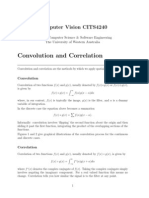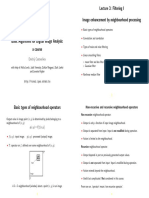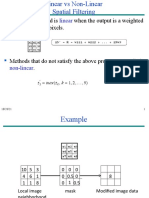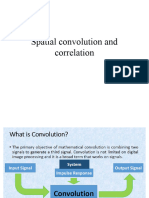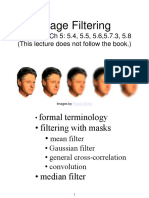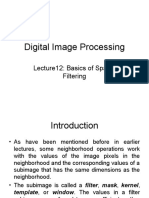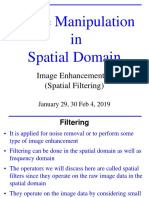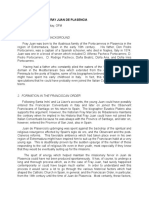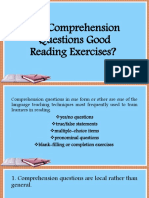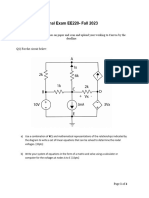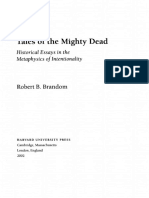0% found this document useful (0 votes)
14 views15 pagesCV - Part 5
The document discusses linear spatial filtering in computer vision, focusing on correlation and convolution processes. It explains the differences between correlation and convolution, particularly in how filter masks are applied to signals and images. Additionally, it covers template matching and normalized correlation for pattern matching, emphasizing the importance of insensitivity to brightness in correlation results.
Uploaded by
yasmine.kacedCopyright
© © All Rights Reserved
We take content rights seriously. If you suspect this is your content, claim it here.
Available Formats
Download as PDF, TXT or read online on Scribd
0% found this document useful (0 votes)
14 views15 pagesCV - Part 5
The document discusses linear spatial filtering in computer vision, focusing on correlation and convolution processes. It explains the differences between correlation and convolution, particularly in how filter masks are applied to signals and images. Additionally, it covers template matching and normalized correlation for pattern matching, emphasizing the importance of insensitivity to brightness in correlation results.
Uploaded by
yasmine.kacedCopyright
© © All Rights Reserved
We take content rights seriously. If you suspect this is your content, claim it here.
Available Formats
Download as PDF, TXT or read online on Scribd
/ 15





